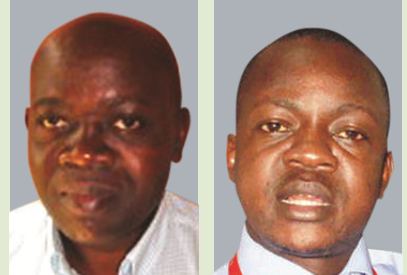
On a blazing afternoon in Kampala’s central business district, Ssalongo Muwanga, was lounging under a tree shade in the Constitution Square Park when we spoke to him. This is one of the few remaining green spaces in the heart of the city.
The tall, lean middle-aged looking man said he is a long distance lorry driver along the Mombasa-Kampala-Goma route. We found him waiting for his business associate from Nairobi in neighboring Kenya. He expected her to arrive by bus at around 6pm that day but, although it was just. 2:45pm, Muwanga said he preferred not to go back to his home in Makindye about five kilometres south of Kampala’s CBD. The journey could take hours back and forth by taxi in the city’s notorious traffic jam.
“This is a good place for me to come and relax as I wait,” said Muwanga. He added that he prefers to meet people at this free open public space.
Around him, in the park which is about the size of two football fields were other people – men and women – possibly about one hundred, sprawled on the sun-parched lawn under the shades of several trees. Snack vendors mingled among them, selling fruits, roasted groundnuts and the flavour of the moment – the fried crunchy grasshopper delicacy called nsenene.
Not far away from Muwanga was Johnson Ahimbisibwe, a young man also lying down under a tree-shade. He told The Independent that he too finds the Constitution Square Park, a convenient place for his leisure time.
“When I am stressed at work, I pick a newspaper and come here because no one will disturb me,” he says, “I am better off here than somewhere in a restaurant where there are many restrictions.”
In the far corner of the park which overlooks Kampala’s Central Police Station, a young man of the type called “cutex boys” maintained endless banter as he gave a young woman a pedicure, while in the most central part of the park, under the biggest tree shade, a group of about 12 Christians with bibles in their hands congregated for what seemed to be an afternoon bible study session. Balikowa and his team would possibly be excited to see all this buzz of activity and residents’ interaction in a public park.
In every direction around the park, people have phones close to their ears and some occasionally turn about as though expecting to see someone. The Constitution Square Park – on days when it is not barricaded off by police – is a popular spot for a rendezvous. You are also most likely to find someone who just arrived in the city for the first time.
Disappearing public parks
However, many of the park loungers might be unaware that green spaces like the Constitution Square are coming under increasing threat by brick and mortar developers. According to Balikowa’s study, the few that remain are of poor quality, out of reach for children and women, and contain safety hazards and obstructions, including in-progress construction, dwellings, and armed police.
For this study, public parks were defined as areas, either publicly or privately owned, where people visit to engage in physical activities, recreation, and socialization or even resting.
Over 30 parks distributed across the five divisions of Central (13 parks), Nakawa (3), Rubaga (7), Makindye (6) and three in Kawempe were listed for the audit by KCCA. But the study only established the locations of 26 parks and open spaces in Kampala’s CBD.
The researchers also failed to inspect six parks in Kampala’s central business district including; Parliamentary Park (CHOGM Gardens), National Theatre Park, Nakasero Park next to Rwenzori Courts and the Railway Station Park because they have since been converted to other uses.
At the time of the study in May, 2016, Constitution Square Park and the Kololo Ceremonial Grounds could not be accessed due to the security cordon around them and therefore they were not included in the study. Both grounds are now only occasionally re-opened for the public.
The study says Kampala also lacks playgrounds and sitting areas in the parks which is a major drawback for potential users.
The researchers, for instance, found that there was lack of sitting areas at nearly all 23 of the parks and this is a deterrent to park use, especially for parents that accompany children to play and for less active users.
Not surprisingly, in the more outlying divisions, where the poorest residents actually live, there are even fewer parks or green spaces. The survey team identified 34 informal open spaces that could pass for parks or sports fields in and around the 10 selected low income neighbourhoods.
They were, however, private property that could be put to other uses any time and are, therefore, not considered as parks by KCCA.
As a result, public parks are not provided for in the city authority’s development plans for 56 low income neighbourhoods within Kampala yet such spaces are particularly important to slum dwellers because of their crowded housing conditions.
Public parks boost healthy living
Dr. Gerald Mutungi, the programme manager, Non-communicable Diseases Prevention and Control at the Ministry of Health also told The Independent that ‘healthy cities’ must have recreational parks, walk ways and cycling lanes so that people can exercise. He noted that opportunities for exercising in Kampala are decreasing.
“We are using motorised transport a lot and even when we come to offices, we use lifts.We then sit for long hours in the office and we then drive back home and sit and watch television.”
“That is very unhealthy and so we really need to exercise our bodies. Unfortunately we don’t have places to exercise from,” he said
Dr. Ian Clarke, a Kampala-based physician also told The Independent that exercise could control some health problems among the elderly. But, he says, jogging on city roads involves high risk of being knocked by the thousands of bodaboda or motorcycle taxis.
“You probably have to go and play golf to get some sort of exercise,” he quipped lightheartedly because he knows most city dwellers cannot. He said seriously, the Kampala urban authorities have not prioritized public parks in Kampala.
A World Health Organization (WHO) study published last year also noted that since, treating NCDs is costly, it is in the economic interest of every country to support prevention campaigns, including encouraging people to do regular exercises.
****
editor@independent.co.ug
 The Independent Uganda: You get the Truth we Pay the Price
The Independent Uganda: You get the Truth we Pay the Price



